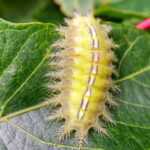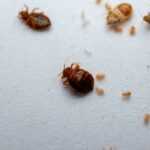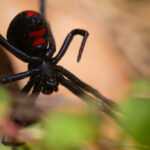Safe & Effective Bee Removal for Homeowners & Beekeepers
Find safe, effective bee removal tips that protect your home and these important pollinators. Perfect for homeowners and beekeepers alike.
Effective Bee Removal: Protecting Your Home and the Environment
If you have found bees around your home, knowing how to handle and remove them safely and effectively is critical. This article will guide you through identifying honey bee swarms and colonies, humane removal methods, choosing the right bee removal service, and preventive measures to avoid future infestations.
- Identifying honey bee swarms and colonies is crucial for effective management and humane removal, as they often settle in sheltered locations close to homes.
- Humane removal methods include using registered beekeepers and professional pest control services, both of which prioritize the safe relocation of bees to protect their populations.
- Legal regulations require licensed pest control companies to handle bee removal, ensuring safe and compliant practices that safeguard both bees and homeowners.
Identifying Honey Bee Swarms and Colonies
Recognizing honey bee swarms and colonies is the first step in managing a bee infestation. Honey bee swarming, a natural process where a new colony is formed from an existing one, is common in spring and early summer. These swarms often settle in unexpected places, such as roofs, utility poles, or ground-level structures, posing potential risks to homeowners and requiring careful handling.
Established honey bee colonies can be found in various residences, including roofs, utility poles, walls, and trees. Recognizing a swarm and locating a colony is essential for safe and effective removal.
Recognizing a Swarm
A honey bee swarm is a fascinating yet potentially intimidating sight. When a group of honey bees leaves an established colony to form a new one, they typically gather in a large, buzzing cluster. Differentiating between honey bees and wasps is crucial, as misidentification can lead to ineffective or dangerous removal attempts, potentially resulting in stings.
Swarming is a transient state in a bee’s life cycle, and during this time, honey bee swarms are generally docile as they search for a new location. However, handling a swarm should be left to experienced beekeepers. Attempting to remove a swarm yourself can be hazardous due to the risk of stings and the potential for harming the bees.
Locating a Colony
Honey bee colonies often establish themselves in hidden and sheltered areas such as soffits, walls, chimneys, and trees. These locations provide the protection and warmth needed for the colony to thrive but can pose significant risks to people and property. Discovering and locating these colonies is essential not only for safe removal but also to prevent potential structural damage.
Vigilance in inspecting areas where bees might nest is crucial. Common nesting sites include inside walls, rafters, chimneys, and even ground cavities. Identifying these locations early allows for safe and humane removal, preventing future issues.
Safe and Humane Bee Removal Methods
Humane and safe methods are a priority in honey bee removal. Techniques like using smoke or bee vacuums protect the bees while facilitating relocation. Bee vacuums, especially, allow for safe collection without harm, making them essential in humane removal practices.
Choosing a reliable bee removal service requires experience and humane methods. A good service should have a clear plan for safe and effective removal, taking into account the techniques and their environmental impact.
Let’s explore two primary methods of humane bee removal: live removal by registered beekeepers and professional pest control services.
Live Bee Removal by Registered Beekeepers
Registered beekeepers are often the best option for humane bee removal. Not all beekeepers offer removal services, but those who do can relocate established colonies to their apiaries without harming the bees. The cost of these services can vary, but many beekeepers provide swarm removal at little to no cost, often requesting only a donation for fuel expenses.
Registered beekeepers ensure humane treatment and preservation of honey bee populations. These professionals play a crucial role in safely relocating bee colonies, supporting the environment and local beekeeping communities.
Professional Pest Control Services
Professional pest control services are another viable option for bee removal. Homeowners should consult professionals for safe bee colony removal instead of attempting it alone.
These services are essential for handling more complex infestations, ensuring that removal is conducted safely and by legal regulations. It’s always best to rely on licensed pest control companies to ensure the job is done right.
Choosing the Right Bee Removal Service
Selecting the right bee removal service ensures humane and effective handling of bee colonies. Bee vacuum cleaners are commonly used for effective removal, providing a humane way to collect and relocate the bees.
Hiring an experienced beekeeper or licensed pest control operator ensures the bee removal process is conducted safely and legally, benefiting both the environment and bee populations in most cases.
Researching Local Beekeepers
Thorough research is essential to find the right local beekeeper for bee removal. The Florida Department of Agriculture & Consumer Services lists registered beekeepers and certified pest control operators. Local beekeeping associations are valuable references for finding certified beekeepers specializing in safe bee removal.
If a listed beekeeper is inactive, local beekeeping organizations or agricultural authorities can assist with additional information. Registered beekeepers often rely on donations or minimal fees for relocating honey bee colonies, making them an affordable and humane option.
Evaluating Pest Control Companies
Evaluating pest control companies ensures effective and safe bee removal services. Checking customer reviews and testimonials can provide insight into their reliability and effectiveness.
Understanding the specific methods used by pest control companies for bee removal is essential. Obtaining cost estimates from multiple companies helps determine the best option for your needs, ensuring an informed decision.
The Importance of Bees and Pollination
Honey bees play a vital role in our ecosystem, making their preservation crucial. Healthy bee populations are essential for maintaining ecological balance and supporting various wildlife. These insects contribute to forest regeneration by pollinating native plant species.
Honey bees are vital to pollinate many plants, significantly contributing to biodiversity and ecosystem health. Their role in supporting the reproduction of flowering plants is crucial.
Agricultural Benefits
Honey bees boost biodiversity in agricultural ecosystems by pollinating flowering plants. Managed bee populations enhance crop yields, playing a crucial role in the agriculture industry by pollinating fruits, vegetables, and nuts, which supports food production and beekeepers’ livelihoods.
Honey bee colonies are instrumental in agriculture, contributing significantly to food production. Their pollination of various crops ensures access to diverse fruits, vegetables, and nuts, highlighting their importance in our daily lives.
Environmental Impact
Honey bees are crucial for environmental health. They support robust ecosystems by aiding the reproduction of wild plants, which in turn supports various wildlife species dependent on these plants for food and habitat.
A decline in bee populations can decrease plant diversity and impair ecosystem functionality. Honey bees’ pollination of native plant species is crucial for forest regeneration and ecosystem balance, underscoring the importance of preserving these vital pollinators.
Legal Considerations for Bee Removal
Legal considerations are crucial in bee removal. Licensed pest control companies must adhere to state laws for removing and managing bee populations, ensuring safe and legal procedures.
When hiring a pest control service for bee removal, verify they have the necessary licenses and certifications. Ensuring the company is licensed and insured is crucial for legal and safe removals.
State-Specific Regulations
State-specific regulations significantly influence bee removal practices. In Florida, the eradication of bees falls under the Structural Pest Control Act, Chapter 482, F.S. Licensed pest control companies can legally eradicate nuisance honey bee colonies.
Homeowners in Florida needing bee removal must hire licensed pest control companies to comply with local laws. These regulations protect both bees and homeowners, ensuring safe and humane removal.
Homeowner Responsibilities
Homeowners are responsible for managing nuisance bee colony removal effectively. Attempting removal without proper equipment and training is not recommended. After removal, contact a contractor to repair any structural damage caused by bee activity.
Following FDACS recommendations when hiring a professional for bee removal ensures safe and legal procedures. Homeowners must be prepared to assist with access and provide necessary information about the site, such as location, size, and accessibility, to facilitate efficient removal.
Preventing Future Bee Infestations
Preventing future bee infestations is essential for maintaining a safe home environment. Creating conditions that deter bees from nesting and implementing preventive measures can significantly reduce the likelihood of colonies on your property.
Honey bee colonies can often be hidden in obscure spaces like behind shutters or in old structures, making it vital to secure potential nesting sites and their location.
Securing Potential Nesting Sites
Securing potential nesting sites is proactive in preventing bee infestations. Sealing entry points deters honey bees from building colonies on your property. Identifying and sealing openings as small as 3/16-inch is crucial.
Small mesh screens over vents and keyholes help block potential entry points for bees, ensuring your property remains bee-free. Addressing these vulnerabilities significantly reduces the risk of infestations.
Regular Property Inspections
Regular property inspections are essential for early detection of bee activity. Routine checks identify early signs of activity, enabling prompt action before a colony forms. Look for increased bee traffic around specific openings to detect potential nesting sites.
Routine inspections can prevent bees from establishing colonies, ensuring your property remains safe and secure. Early intervention is key to effective management of bee infestations.
Effective bee removal is not just about eliminating a nuisance; it’s about protecting your home and the environment. Honey bees play an integral role in pollinating crops and maintaining ecological balance. By understanding how to identify swarms and colonies, choosing humane removal methods, and selecting the right professionals for the job, you can address bee infestations responsibly and legally.
Remember, bees are crucial to our ecosystem. Ensuring their safe removal and relocation by experienced professionals helps preserve their populations and supports biodiversity. By taking proactive measures to prevent future infestations, you can maintain a safe and bee-free home while contributing to environmental conservation. Let’s embrace a responsible approach to bee removal, recognizing the value these industrious insects bring to our world.
Frequently Asked Questions
What should I do if I see a honey bee swarm near my home?
It is crucial to contact a local beekeeper or professional pest control service if you see a honey bee swarm near your home. Avoid attempting to remove the swarm yourself, as it can pose dangers.
How can I tell if the insects around my home are honey bees or wasps?
To distinguish between honey bees and wasps, notice that honey bees have a fuzzy, robust body, whereas wasps possess a smoother, more slender form. Correct identification is crucial for appropriate management.
What are the benefits of using a registered beekeeper for bee removal?
Using a registered beekeeper for bee removal ensures the safe and humane relocation of bees, preserving their populations and protecting the environment. This professional approach minimizes the risks associated with improper removal methods.
Are there legal requirements for bee removal in my state?
Yes, many states have specific legal requirements regarding bee removal, often necessitating licensed pest control companies to handle the process. It is essential to consult your state’s regulations to ensure compliance.
How can I prevent future bee infestations on my property?
To prevent future bee infestations, secure potential nesting sites by sealing entry points and conduct regular property inspections. Taking these measures will effectively deter bees from establishing colonies on your property.



